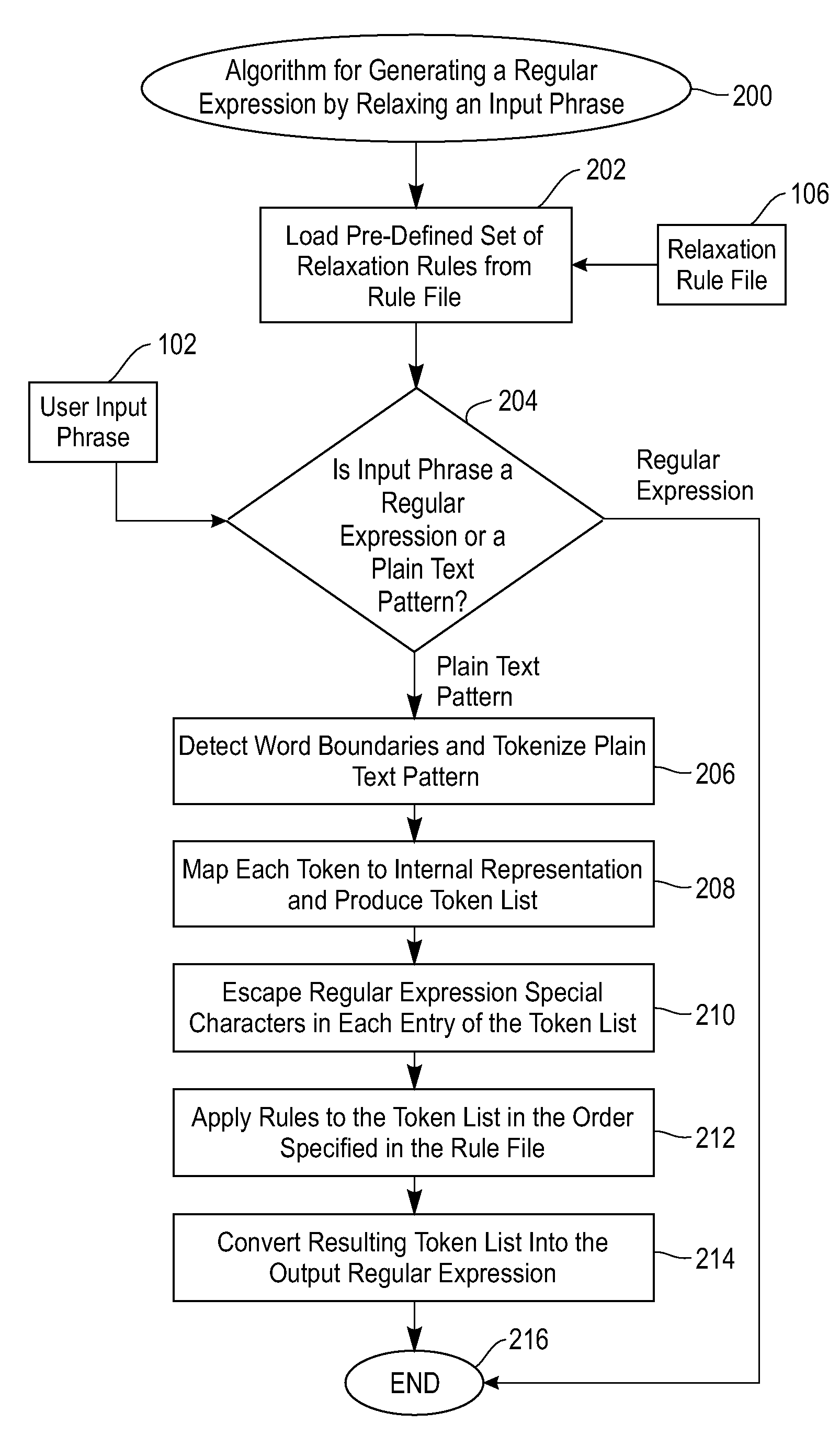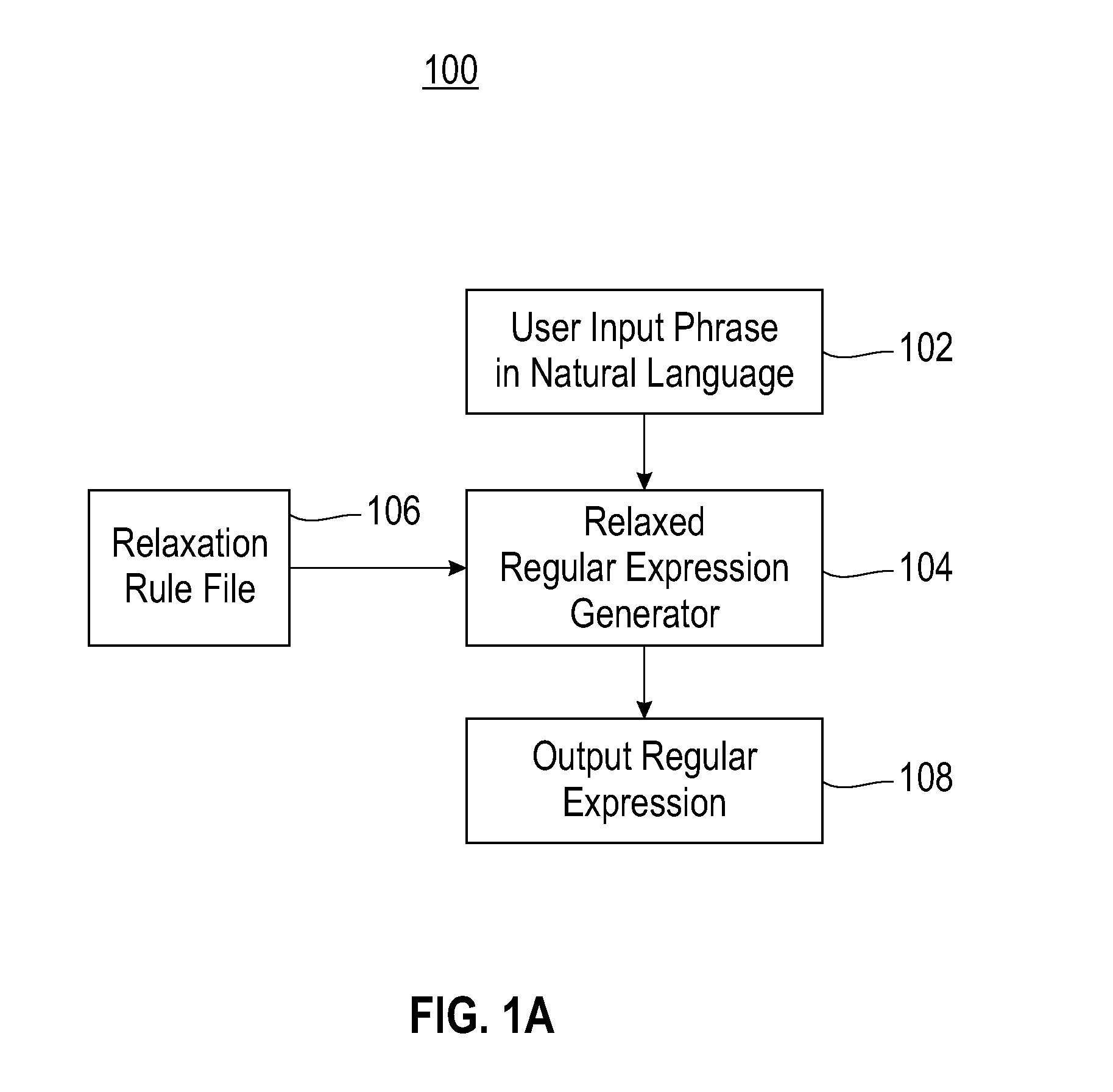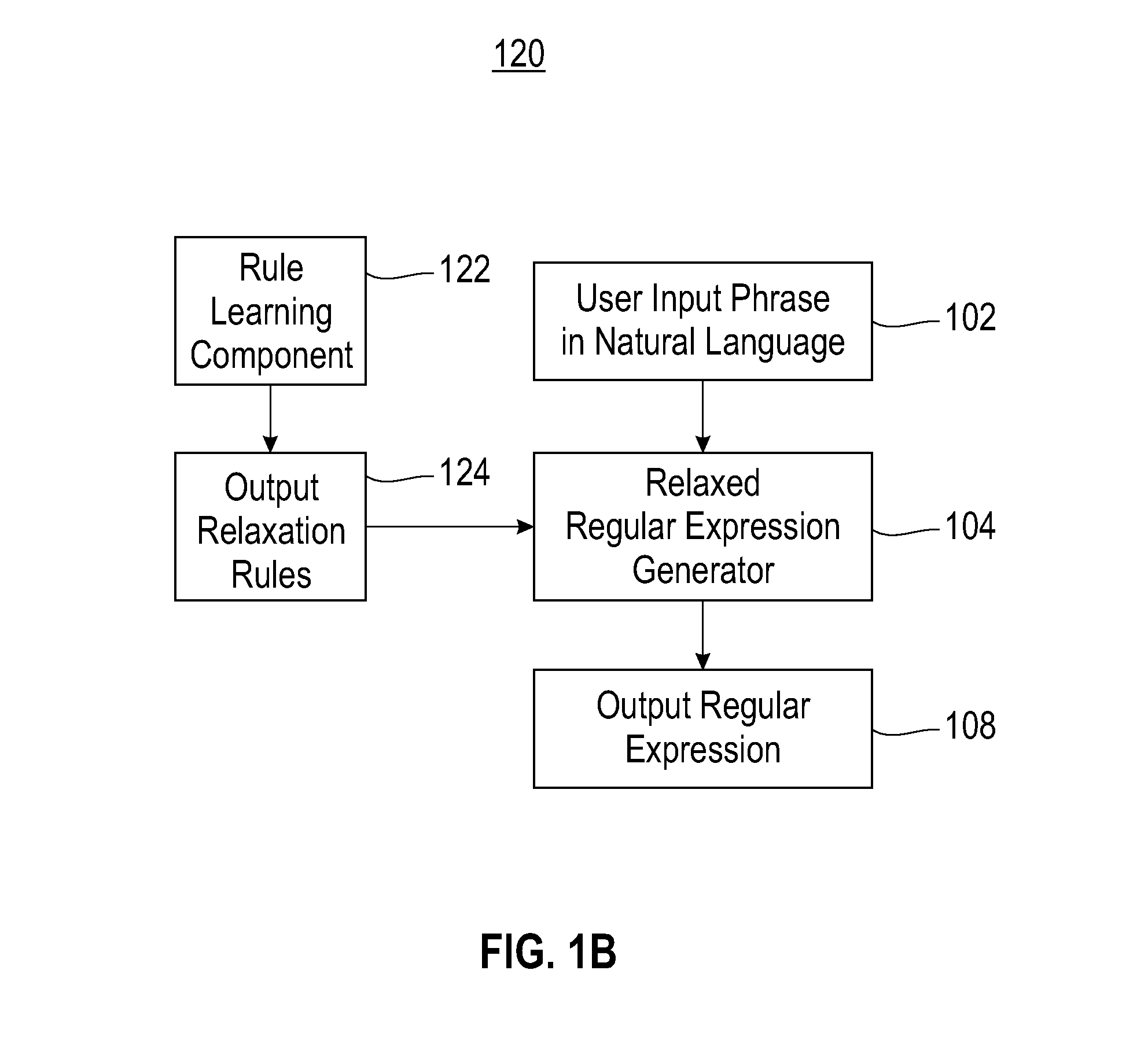Method for automatically generating regular expressions for relaxed matching of text patterns
a text pattern and automatic generation technology, applied in the field of automatic generation of regular expressions for relaxed matching of text patterns, can solve the problems of reducing the accuracy of information retrieval, limiting the ability of synonym dictionary, and hampered by restricted usability of known regular expression generation tools
- Summary
- Abstract
- Description
- Claims
- Application Information
AI Technical Summary
Benefits of technology
Problems solved by technology
Method used
Image
Examples
Embodiment Construction
1 Overview
[0026]The goal of information extraction (IE) is to extract structured information from unstructured text (a.k.a. plain text) (e.g., documents, files, emails, web pages, etc.). In rule-based IE, rules are written that describe textual patterns of interest, which are to be extracted from unstructured text. Regular expressions are used for expressing such textual patterns of interest. As used herein, a regular expression is defined as a compact representation that describes a set of strings without listing all the elements of the set. A regular expression matches each of the strings in the set.
[0027]For example, consider the information extraction task of identifying text patterns that associate a person with his or her phone number. A text pattern of interest for this example is the phrase “can be reached at”. Using such a pattern, a rule-based IE system identifies occurrences of the form “ can be reached at ” and generates the corresponding pairs of related Persons and Pho...
PUM
 Login to View More
Login to View More Abstract
Description
Claims
Application Information
 Login to View More
Login to View More - R&D
- Intellectual Property
- Life Sciences
- Materials
- Tech Scout
- Unparalleled Data Quality
- Higher Quality Content
- 60% Fewer Hallucinations
Browse by: Latest US Patents, China's latest patents, Technical Efficacy Thesaurus, Application Domain, Technology Topic, Popular Technical Reports.
© 2025 PatSnap. All rights reserved.Legal|Privacy policy|Modern Slavery Act Transparency Statement|Sitemap|About US| Contact US: help@patsnap.com



